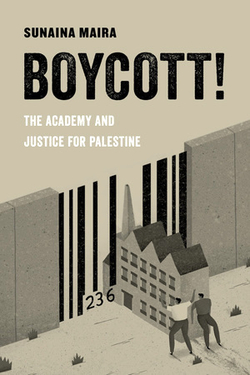Critiques of the global academic march to the left tend to focus on classroom antics, silly statements to the press, articles with incomprehensible titles, and efforts to punish students who have the temerity to disagree with their radical professors.
But books are more important than all of this. Books make up the heart of the scholarly enterprise. Articles disappear, press analyses vaporize, and classroom lectures effervesce; books endure. They build the edifice of knowledge and potentially acquire an influence across the generations.
What sorts of books, then, are being written by today's top scholars?
 For a representative sample, I looked at the Spring 2004 catalogue of one of the largest and most prestigious university publishers in America, the University of California Press. The catalogue is a substantial affair, 116 pages long, lavishly designed, boasting full color illustrations and a striking cover.
For a representative sample, I looked at the Spring 2004 catalogue of one of the largest and most prestigious university publishers in America, the University of California Press. The catalogue is a substantial affair, 116 pages long, lavishly designed, boasting full color illustrations and a striking cover.
The books being published by California, however, leave much to be desired. Yes, there are apolitical inquiries into mammal evolution and Mark Twain's final years, but a uniform leftist tone of hostility toward established institutions and an embrace of the radical fringe characterize the list.
The first category includes many assaults on the American government. Quotes here and throughout draw on catalogue copy and blurbs:
American Gulag: Inside U.S. Immigration Prisons, by Mark Dow, "tells the horrifying story of men, women and children detained indefinitely by U.S. immigration officials" and explicitly compares their circumstances to those in "Stalin's U.S.S.R."
There's Something Happening Here: The New Left, the Klan, and FBI Counterintelligence, by David Cunningham, "examines the bureau's massive campaign of repression" in the 1960s.
The Children of NAFTA: Labor Wars on the U.S./Mexico Border, by David Bacon, "paints a powerful portrait of poverty, repression, and struggle."
Other anti-government books expose the Three-Mile-Island "nuclear crisis" in 1979 (it was just a partial meltdown) and the first Bush administration's alleged "assault on the constitutional freedoms of the American media."
Business gets its comeuppance in a "gripping exposé" claiming that systematic overcharging by the pharmaceutical industry makes drug costs "so needlessly high." The Catholic Church is mauled in two studies, one denigrating the Roman Curia, another comparing Jesuit and Nazi art.
And these days, what self-respecting academic press could go a season without a book that, "in light of feminist, gay, and transgender criticism," challenges the staid old notion of male and female genders?
Positive studies, in contrast, celebrate leftist and insurgent institutions:
Bringing the War Home: The Weather Underground, the Red Army Faction, and Revolutionary Violence in the Sixties and Seventies, by Jeremy Varon, "reconstructs the motivation and ideology of violent organizations" by conveying "the intense passions of the era — the heat of moral purpose, the depth of Utopian longing, the sense of danger and despair, and the exhilaration over temporary triumphs."
Taking Back the Streets: Women, Youth, and Direct Democracy, by Temma Kaplan, exalts street demonstrations, finding they "bore witness to human rights violations, resisted the efforts of regimes to shame and silence young idealists, and created a vibrant public life that remains a vital part of ongoing struggles for democracy and justice."
One subset of California books honors left-wing culture, such as beat poet Allen Ginsberg, leftist printmakers in New York of the 1930s, and Ant Farm, a "radical architectural collective." Another subset hails left-wing politics, such as American labor unions, an American consumer revolt, and the founder of the Tibetan Communist Party.
Squinting as hard as I could at California's spring list of 140 titles, however, I found not one single conservative book. And the same pattern generally holds true of other major academic publishers, if not always so consistently.
This finding of wisdom in only one part of the political spectrum and publishing only its views is deeply consequential: it betrays the concept of academic freedom, a concept that assumes no one outlook has a monopoly on truth, but that truth emerges from debate.
To reinstate academic freedom requires a reassertion of principles, something most effectively done through the widespread adoption of the "Academic Bill of Rights," David Horowitz's initiative that has already reached 130 American campuses and eight state legislatures. (See its text and some press coverage at http://www.studentsforacademicfreedom.org)
Anyone interested in helping American universities, including their presses, regain balance should actively support this important effort.
_________
One of the publisher's more absurd titles.
Aug. 30, 2005 update: John Braeman picks up this theme today at "Academic Hate Press."

Jan. 12, 2018 update: The press has outdone itself with Boycott! The Academy and Justice for Palestine by Sunaina Maira, an avid BDSer. One wonders if anyone there knows what scholarship means, anymore.